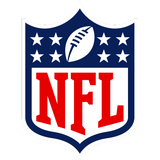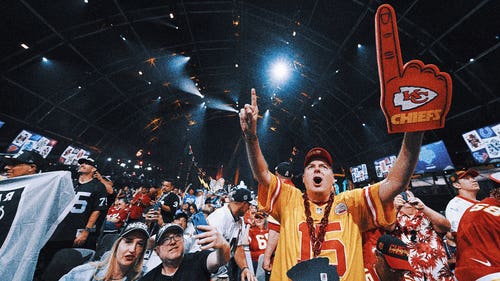
Small NFL stat makes big difference
Every Wednesday until the Super Bowl, Brian Billick will write a weekly column looking in-depth at different aspects of the modern NFL and will discuss experiences and insights he gained while coaching and broadcasting.
One of the frustrating things about football is that, on an individual basis, it's difficult to reduce performance to easily digestible numbers. A great hitter in baseball is going to be a great hitter wherever he plays, give or take the home ballpark differentials.
But in the NFL, individual statistical performance is extremely interdependent on teammates and outside forces. Larry Fitzgerald is still one of the elite wide receivers in the league, but his numbers don’t show it, largely due to the cavalcade of ineptitude we’ve seen from the Arizona Cardinals’ quarterbacks this year.
But it’s also true that on a team level, the numbers are more easily digestible. (One of the great revolutions in the game has come in the ancillary numbers. Take a look at the websites footballoutsiders.com and profootballfocus.com for a glimpse of what’s possible in the modern age of football statistical analysis.) Within the game, most observers have long ago dismissed the accuracy of simple cumulative stats like total yards gained and total yards allowed.
In the place of those obviously inexact statistics, some people swear by yards per pass attempt when judging a team’s passing game. Others say yards per rush allowed is the fundamental measure of defensive effectiveness. But one of the numbers I looked closely at when I was coaching — and one that is still monitored carefully by several coaches in the league — is a synthesis of statistics that I’ve taken to referring to as “Toxic Differential.” It essentially combines turnover differential with explosive play differential (defined as plays gaining more than 20 yards).
Of course, it’s striking how often coaches are dismissive of statistics that their own teams are bad at. Often, they’ll throw out a couple of “more meaningful” statistics, usually ones that their teams are pretty good at, as being more relevant.
The reason some of us have been drawn to Toxic Differential is that it is an interactive statistic. It’s not merely good enough to avoid turning the ball over; you need to generate big offensive plays as well. On defense, you can’t just sit back and play a deep prevent defense all the time; you have to generate turnovers as well. On both sides of the ball, gambling to generate a big play often leaves you open to committing a big error. Toxic Differential does a good job at showing how teams balance risk and reward.
They’re tearing up the Saints on talk radio down in New Orleans, and the points of contention are easy to see. New Orleans is last in the NFL in giving up explosive plays with 61. Common sense says defensive coordinator Steve Spagnuolo just needs to get in deep pass coverage and avoid giving up so many big plays. But the Saints are also in the bottom half of the league in generating turnovers. When they try to play more aggressively, they expose themselves to more big plays. Often, the answers are simple, but not easy.
It has long been a proven adage that if you have a plus-2 turnover advantage on your opponent you will win the game 80 percent of the time. If you have a minus-2 explosive-play advantage it equally leads to winning about 80 percent of the time. If you have both you win close to 95 percent of the time. No other statistical combination that you can control has quite the same rate of predictive success.
Here’s the chart for this season thus far:
A few observations worth adding . . .
• Under old pro Tom Brady, New England runs a high-octane offense that is still a hallmark of ball security. Bill Belichick-coached teams tend to be smart, and the ’12 Patriots are no different, with 32 takeaways and only eight giveaways, for a differential of plus-24. The Patriots defense is full of big plays, both good and bad. They’ve allowed 58 explosive plays (against just 48 on offense), giving New England a minus-10 explosion differential. That still puts them at plus-14, among the top five teams in the league, but less solid in their overall game than some of the better Patriots teams of old.
• San Francisco is less spectacular on both sides of the ball, with just 17 takeaways and 11 giveaways, for a plus-6 in turnover differential. But where the 49ers really show their mettle is in their defense’s avoidance of explosive plays, where they’ve given up an NFC low of 28. Offensively, they’ve started cooking with gas since Colin Kaepernick became the starting QB and their 46 offensive explosions give them a plus-18 in explosive differential. Combined with the plus-6 in turnovers, the 49ers are at a league-leading plus-24 in Toxic Differential.
• Baltimore is right behind, with a plus-12 turnover differential and a plus-11 explosive play differential, despite the injuries the defense has suffered. If they maintain that, they’ll be a solid choice to go deep in the playoffs.
• A young team like Indianapolis is still developing. Andrew Luck has been remarkable, but he’s still a rookie, and has made some bad throws to contribute to the Colts' 21 turnovers (leading to a minus-14 turnover differential, when combined with the Colts defense’s inability to take the ball away). But Luck has also showed much more big-play ability than a typical rookie, and that has contributed to the Colts’ 52 explosive plays and the plus-11 differential they enjoy there.
• Other trends emerge when you look at the chart as well. Cleveland, despite its rough start, has shown some defensive strength and is in the top 10 in Toxic Differential, thanks to a buttoned-down offense and an opportunistic defense. On the other end of the spectrum, the Philadelphia Eagles have been worse than expected, partly due to the defensive inability to take the ball away (just 10 turnovers generated thus far) and the dreadful performance of the offensive line, which has inhibited the explosive-play ability of Michael Vick when he’s been healthy enough to be in the lineup.
• As we’ve discussed before, Kansas City has been dreadful to watch this year, and the toxic differential underscores why. The Chiefs are last in turnover differential, with a comedic minus-21 and also last in explosive-play differential (minus-17) for an overall total of minus-38. They don’t have 1-10 talent, but that crippling toxic differential can surely lead to a 1-10 record.









